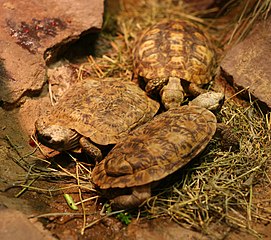The technology behind amphibian and reptile lighting has come a long way since I began working at the Bronx Zoo, when “black lights” and the sun were our only UVB (Ultra Violet B radiation) options. Today I’ll review an important herp husbandry innovation, the compact UVB fluorescent bulb (note: bulbs are referred to as “lamps” in technical papers). My experiences have been positive, but some reptile-keepers have raised concerns, so I’ll address them as well. Please be sure to post your experiences and ideas below, as we still have much to learn about this important topic.
Reptiles, UVB and UVA: a Quick Primer
Most heliothermic (basking) lizards, turtles, and crocodilians need exposure to UVB light rays with a wavelength of 290-315 nanometers in order to synthesize Vitamin D3 in their skin. Vitamin D3 allows these animals to utilize dietary calcium. Without D3, dietary calcium is not metabolized and metabolic bone disease sets in. Snakes, highly-aquatic turtles, nocturnal lizards, most amphibians, and certain others can make use of dietary Vitamin D, but most basking species rely on the skin-synthesized form. Read More »
 That Reptile Blog – Reptile, Amphibian and Exotic Pet Care and Information
That Reptile Blog – Reptile, Amphibian and Exotic Pet Care and Information

